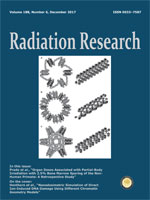In this study, lung cancer risk from occupational plutonium exposure was analyzed in a pooled cohort of Mayak and Sellafield workers, two of the most informative cohorts in the world with detailed plutonium urine monitoring programs. The pooled cohort comprised 45,817 workers: 23,443 Sellafield workers first employed during 1947–2002 with follow-up until the end of 2005 and 22,374 Mayak workers first employed during 1948–1982 with follow-up until the end of 2008. In the pooled cohort 1,195 lung cancer deaths were observed (789 Mayak, 406 Sellafield) but only 893 lung cancer incidences (509 Mayak, 384 Sellafield, due to truncated follow-up in the incidence analysis). Analyses were performed using Poisson regression models, and were based on doses derived from individual radiation monitoring data using an updated dose assessment methodology developed in the study. There was clear evidence of a linear association between cumulative internal plutonium lung dose and risk of both lung cancer mortality and incidence in the pooled cohort. The pooled point estimates of the excess relative risk (ERR) from plutonium exposure for both lung cancer mortality and incidence were within the range of 5–8 per Gy for males at age 60. The ERR estimates in relationship to external gamma radiation were also significantly raised and in the range 0.2–0.4 per Gy of cumulative gamma dose to the lung. The point estimates of risk, for both external and plutonium exposure, were comparable between the cohorts, which suggests that the pooling of these data was valid. The results support point estimates of relative biological effectiveness (RBE) in the range of 10–25, which is in broad agreement with the value of 20 currently adopted in radiological protection as the radiation weighting factor for alpha particles, however, the uncertainty on this value (RBE = 21; 95% CI: 9–178) is large. The results provide direct evidence that the plutonium risks in each cohort are of the same order of magnitude but the uncertainty on the Sellafield cohort plutonium risk estimates is large, with observed risks consistent with no plutonium risk, and risks five times larger than those observed in the Mayak cohort.
How to translate text using browser tools
6 October 2017
Lung Cancer Risk from Plutonium: A Pooled Analysis of the Mayak and Sellafield Worker Cohorts
Michael Gillies,
Irina Kuznetsova,
Mikhail Sokolnikov,
Richard Haylock,
Jackie O'Hagan,
Yulia Tsareva,
Elena Labutina
ACCESS THE FULL ARTICLE

Radiation Research
Vol. 188 • No. 6
December 2017
Vol. 188 • No. 6
December 2017




